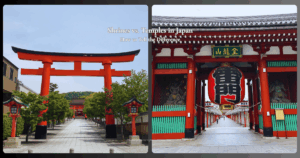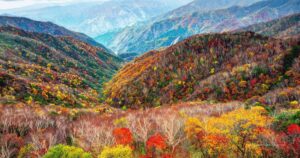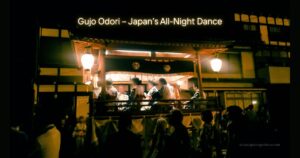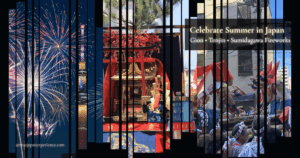August in Japan is hot and humid.
But it’s also full of exciting seasonal events.
One of the famous is the Aomori Nebuta Festival—a lively parade of glowing floats and dancers.
To balance the heat and energy, you can also visit Oirase Gorge, a cool forest trail with waterfalls and fresh air.
This guide shows how to enjoy both in one perfect 3-day trip.
Aomori Nebuta Festival: What It Is and Why It’s So Exciting

The Aomori Nebuta Festival is one of Japan’s most exciting summer events.It takes place in Aomori City every year from August 2 to 7.
At night, the streets come alive with giant glowing floats.These floats are called nebuta—huge paper artworks lit from within.
They show powerful warriors, mythical beasts, and epic legends.As they move through the city, drums pound and flutes fill the air.
Dancers called haneto jump and shout “Rassera!” with joyful energy.You can watch, or even join in and dance alongside them!
On the final night, the nebuta floats ride across the sea.
Then, fireworks light up the sky in a magical grand finale.
・Recognized as an Important Intangible Folk Cultural Property of Japan
・Each float is handmade with amazing detail and color
・Every night brings music, movement, and glowing lights
・The sea parade and fireworks on August 7 are unforgettable
The History and Cultural Meaning of the Nebuta Festival
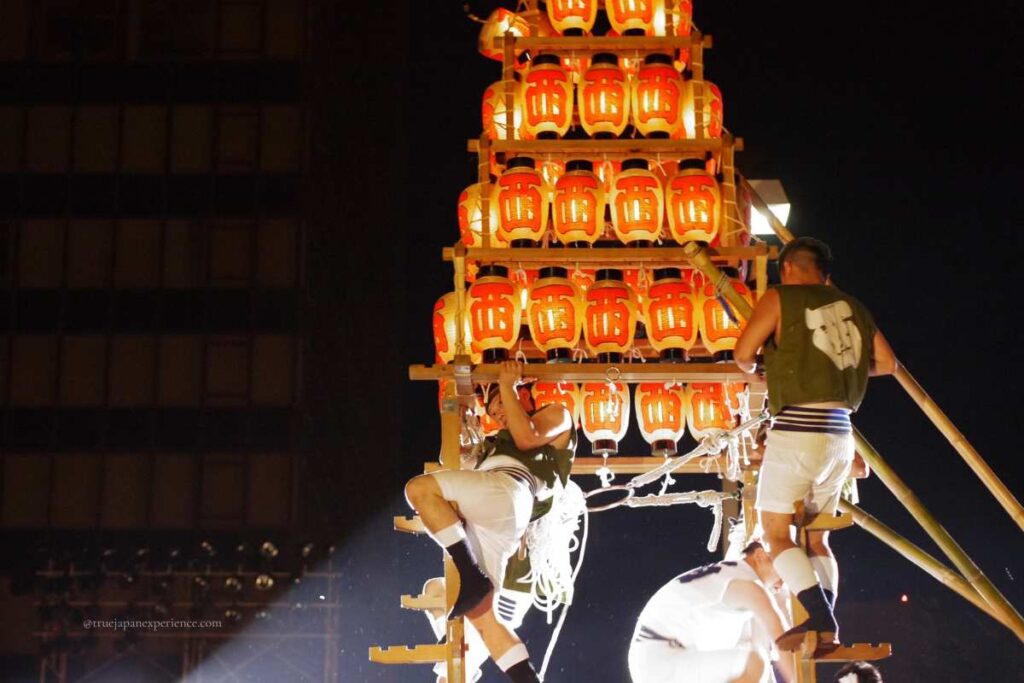
The word “nebuta” comes from nemuri-nagashi, which means “sleep drifting.”People believed it could drive away drowsiness and bad spirits that disturbed farming work.
The festival’s roots go back to the Tanabata lantern tradition in the Nara period.At that time, people floated paper lanterns down rivers to wash away bad luck and pray for good health.
Over time, the lanterns became larger and more decorative.
By the 18th century, people had started making human-shaped floats.In the 20th century, they became even bigger and switched from candles to electric lights.
Unlike shrine festivals, Nebuta has no central god or temple.But today, some floats receive blessing rituals at local shrines like Hirosaki Shrine, wishing for safety during the parade.
Aomori Nebuta Festival 2025: Full Schedule and Highlights

The Nebuta Festival takes place every year from August 2 to 7, filling the streets of Aomori with energy, color, and celebration.
From glowing floats and dancing haneto to a sea parade and fireworks, each night offers something special.
Here’s the 2025 schedule—so you won’t miss any of the magic.
📍 Check official route maps and details here:
https://www.nebuta.jp/foreign/english.html
Why Aomori’s Nebuta Floats Are So Unique and Captivating

The floats in the Aomori Nebuta Festival aren’t just big—they’re breathtaking.Each one is a glowing masterpiece, handcrafted with care and bursting with color and detail.
They are made from wood, wire, and traditional washi paper, then painted in bold colors.Many floats show fierce warriors, legendary beasts, or mythical scenes, frozen in dramatic action.
At night, they shine from within using LED lights, glowing like giant lanterns in the dark.Some are as wide as 9 meters and over 5 meters tall—towering over the crowds as they roll through the city.
It takes an entire year to build one.
Each float is created by skilled artists called nebuta-shi, who dedicate months to designing, crafting, and painting every piece by hand.
The result is not just a float—it’s a moving work of art that tells a story and stirs the soul.
Kingyo Nebuta: The Cute Goldfish Lanterns of the Festival
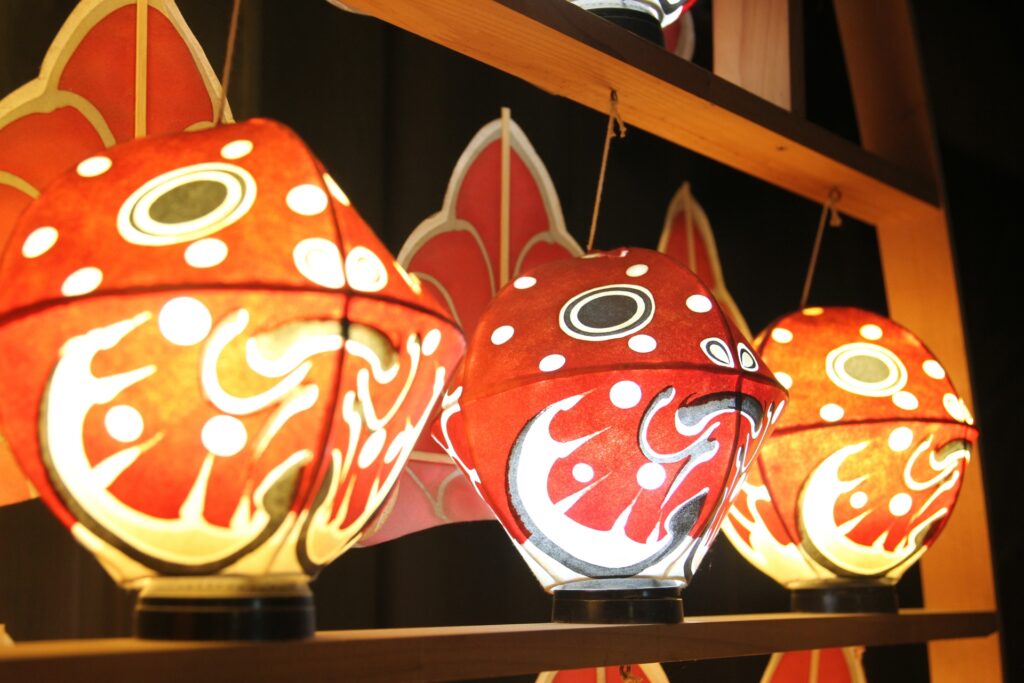
Not all floats at the Nebuta Festival are huge and dramatic.Some are small, round, and super cute—like the Kingyo Nebuta, or goldfish lantern.
These little lanterns are often carried by children during the festival.They have big round eyes, chubby bodies, and long, flowing tails that move as you walk.
The design is based on a rare local goldfish called the Tsugaru Nishiki, which was once kept only by samurai families in the area.
Today, Kingyo Nebuta are not only part of the parade, but also popular as festival decorations and souvenirs.You’ll see them hanging outside shops, stations, and homes throughout Aomori during the season.
They add a playful and nostalgic charm to the Nebuta Festival—and make great memories for kids and adults alike.
Haneto Dancers: Join the Parade at the Nebuta Festival
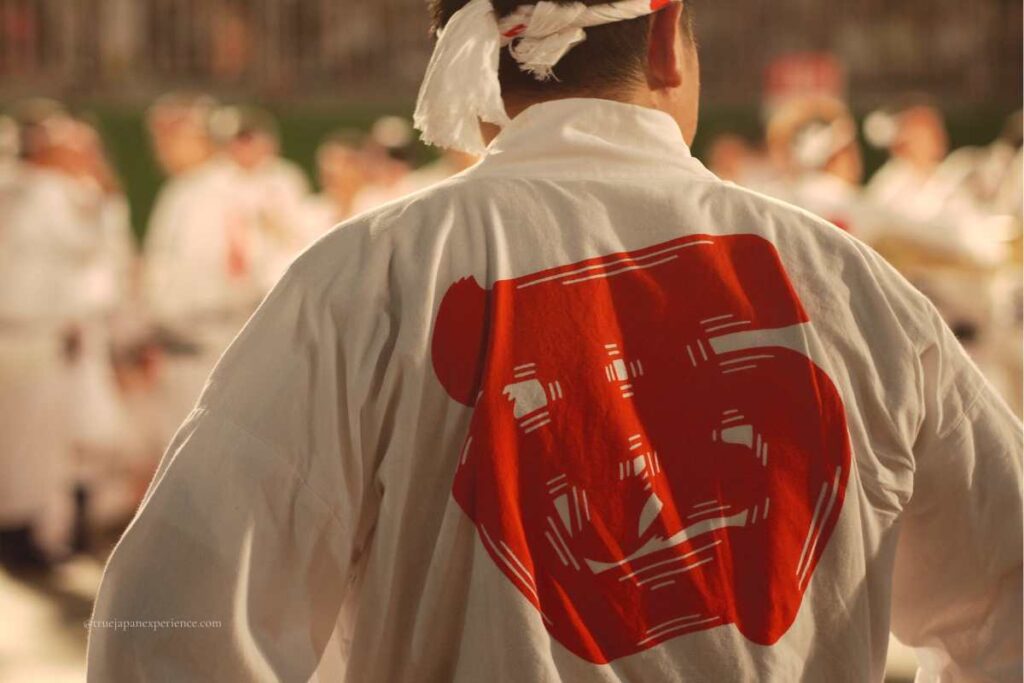
One of the most exciting things about the Aomori Nebuta Festival is that you can join the parade yourself!
People who dance in the parade are called haneto, and anyone is welcome to join—as long as you wear the right outfit.
You don’t need to sign up or join a group.But wearing the full haneto costume is a must.If you’re missing even one part, you may not be allowed to take part in the parade.
You can rent or buy a haneto outfit in Aomori City, especially at local department stores, kimono shops, or rental shops.
Some places also offer dressing services, so you can be ready to jump into the fun without any stress.
Here’s what a full haneto outfit includes:
・A white yukata (cotton robe) with colorful shoulder straps (tasuki)
・A red or pink sash around the waist, called a shigoki
・A triangular straw hat decorated with artificial flowers, called a hanagasa
・Split-toe white socks (tabi) and straw sandals (zori), tied securely with a cloth strap (mameshibori)
・A small metal flask called a gagashiko—this is used to carry water or sake (optional)
Once you’re dressed properly, you’re free to dance along with the parade!
All you need to do is jump, shout “Rassera!”, and enjoy the rhythm with everyone else.
It’s a once-in-a-lifetime chance to be part of the festival, not just a viewer.Dancing as a haneto will make your Nebuta experience unforgettable.
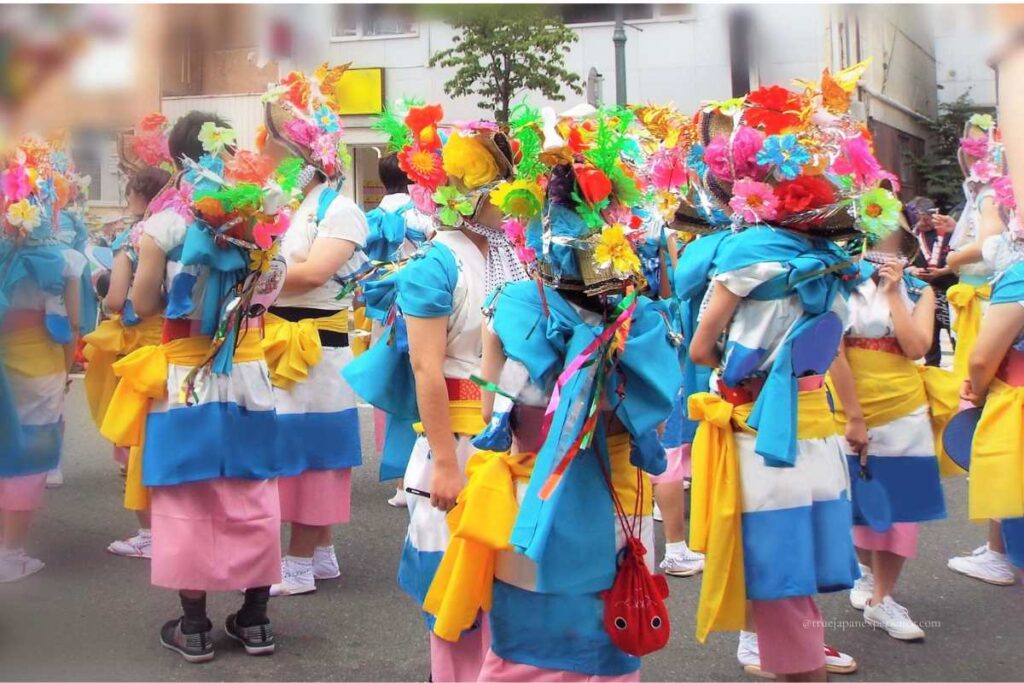
How to Watch the Nebuta Parade Comfortably
If dancing isn’t your thing, or if you just want to sit back and soak it all in, there’s another great option: reserved seating.
These seats are available along the main parade routes and offer an excellent view of the glowing floats and dancers.
Instead of standing in the crowd for hours, you can relax and enjoy every moment in comfort.
Reserved seating is especially helpful for families, older travelers, or anyone who wants to take photos without being pushed around.
Tickets usually sell out quickly, so it’s a good idea to book early through the official festival website or local travel agencies.
Having a seat gives you a calm, clear view of the action—and helps you save your energy for the rest of your trip.
Oirase Gorge: The Perfect Nature Escape After Nebuta Festival
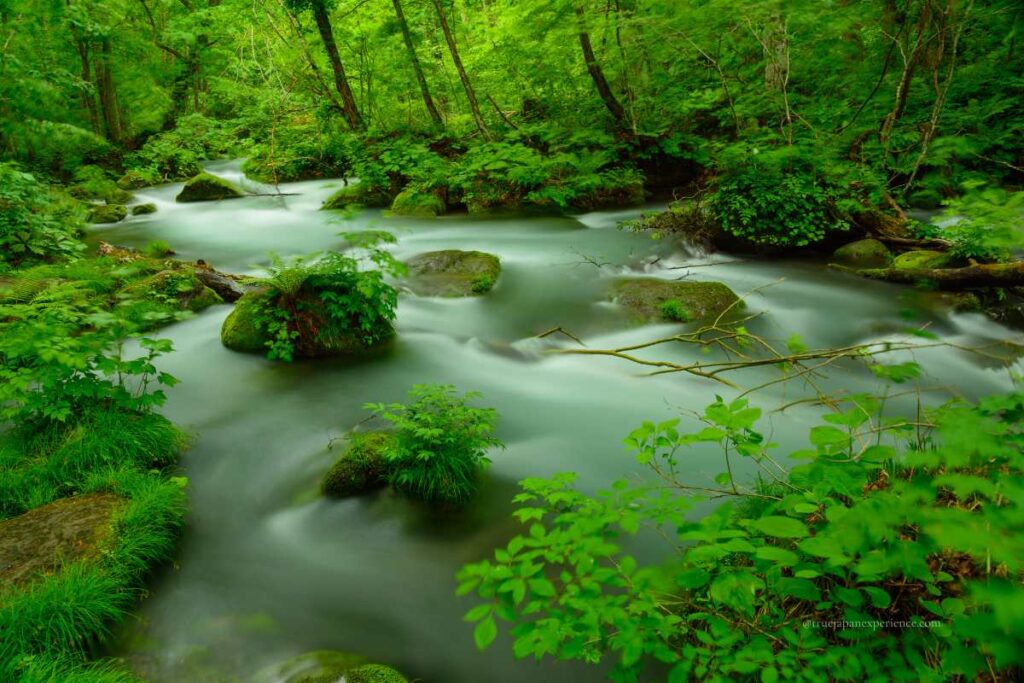
Need to cool down after all the excitement of the Nebuta Festival?
Just a short trip from Aomori City, Oirase Gorge is the perfect place to relax, refresh, and breathe in pure mountain air.
This beautiful 14-km trail runs alongside a crystal-clear stream that flows from Lake Towada.You’ll walk through green forests, past mossy rocks, and beside rushing waterfalls that sound like music in the trees.
It’s quiet, shady, and full of natural beauty—an unforgettable escape from the summer heat.
・A great way to cool off on a hot August day
・Full of waterfalls, tall trees, and soft green moss
・The trail is mostly flat and easy to walk—even for beginners
・Don’t miss Ashura Stream, Kumoi Falls, and Choshi Otaki, the biggest waterfall in the gorge
How to Get from Aomori to Oirase Gorge
You’ve enjoyed the energy of the Nebuta Festival—now it’s time to slow down.
Luckily, getting to Oirase Gorge is easier than it sounds. Here’s how to get there without needing a car.
⛔ Thinking of Driving?
Unless you’re used to driving in Japan, we suggest skipping the rental car.Signs can be tricky, and those mountain roads? Narrow and a little stressful.
Tips for Enjoying Both the Nebuta Festival and Oirase Gorge
Traveling to Aomori in August means two amazing experiences: the Nebuta Festival full of energy, lights, and music—and the peaceful beauty of Oirase Gorge.
To enjoy both in the best way, here are some smart tips to help you stay comfortable, avoid crowds, and make the most of your trip.
1. Book Accommodation and Transport Early

If you’re planning to visit during the Nebuta Festival, you’ll need to book your hotel far in advance.
And we don’t mean just a month or two ahead—many places are already full several months before August.
Most hotels in Aomori City begin accepting reservations around February or March, and popular rooms often sell out right away.
Some hotels even open their bookings as early as February 1st, and they can fill up within days.
The same is true for places around Oirase Gorge and Lake Towada.
Because many tour groups also stay in these areas, especially during the festival week, it can be hard to find a room even outside the city.
If you’re hoping to stay at a hot spring inn or lakeside resort, it’s best to book at least 3 to 6 months in advance.
As soon as you know your travel dates, check when your chosen hotel starts taking reservations.Try to book on the release day if possible—it really makes a difference.
If you wait too long, your only options might be far from the city or much more expensive.Planning early means less stress, better prices, and a smoother trip overall.
2. Get Ready for Your Walk Through Oirase Gorge

Oirase Gorge is one of the most peaceful and refreshing places to explore in northern Japan.
But even though the trail is mostly flat and well-maintained, a little preparation will make your experience much more enjoyable.
Start with your shoes.
You’ll be walking alongside rivers, waterfalls, and mossy rocks.
Comfortable walking shoes—like sneakers or light hiking shoes—are the best choice.
It’s better to avoid sandals or anything with open toes, since the path can be slippery in places, and there may be bugs.
August can be warm and humid, even in the shade.
So don’t forget to bring a hat, some water, and maybe even a small towel.
Bug spray is also helpful, especially if you plan to stop and take lots of photos or enjoy a slow walk.
Some travelers only walk a part of the trail.
That’s perfectly fine!
If that’s your plan, make sure to check the return bus times in advance so you don’t get stuck waiting too long.
Having a rough schedule helps you enjoy the forest without worry.
With the right gear and just a little planning, your walk through Oirase Gorge will feel less like a hike—and more like a peaceful escape into nature.
3. Small Essentials That Make a Big Difference
Whether you’re dancing in the festival or walking through the forest, it’s often the little things that decide how smooth and enjoyable your trip will be.
Packing just a few smart items can save you from stress, keep you comfortable, and let you focus on the fun.
A portable battery charger is especially useful—between photos, videos, and navigation, your phone will work hard all day.
You’ll also want to bring a compact umbrella or lightweight rain poncho, as summer weather in Aomori can change quickly, especially near the mountains.
Carrying a small towel or some wet wipes is a good idea, too.They’ll help you stay fresh after a sweaty walk or before a nice dinner.
There are only a few places to buy food along the Oirase trail, so bringing a rice ball or snack bar with you is a good idea—just in case you get hungry along the way.
During the festival, restaurants in Aomori City can get extremely crowded—especially around parade time.
Eating a little earlier than the crowd, or picking up something from a convenience store, can save you a lot of waiting.
Also, try not to plan too tightly.
It’s tempting to fill your days with activities, but both the Nebuta Festival and Oirase Gorge can be surprisingly tiring.
Leave space in your schedule for rest, slow walks, or just enjoying the atmosphere.
If your schedule allows, spending a night near Oirase or Lake Towada is highly recommended.
Waking up to quiet forest air and taking a walk at sunrise is a moment you’ll never forget.
3-Day Itinerary: Nebuta Festival and Oirase Gorge Trip
If you’re visiting Aomori in early August, this simple 3-day plan lets you enjoy both sides of the trip: the energy of the Nebuta Festival and the quiet beauty of Oirase Gorge.
It’s not a packed schedule—just a nice balance of fun, fresh air, and time to slow down.
Day 1: Arrive in Aomori ~ Visit Nebuta House Wa Rasse ~ Watch the Nebuta Parade from 7:00 p.m.
Day 2: Early Morning Departure ~ Hike Oirase Gorge ~ Lunch and Sightseeing at Lake Towada
Day 3: Shop for Souvenirs ~ Taste Local Food ~ Relax Before Heading Home
On Day 1, you’ll arrive in Aomori—maybe by train, maybe by plane—and jump right into the festival feeling.
In the afternoon, stop by Nebuta House Wa Rasse. It’s a fun place where you can see real floats up close and learn a bit about the festival’s story.
When evening comes, the city really comes alive. Around 7 p.m., the Nebuta parade begins.
Giant glowing floats roll through the streets, dancers jump and shout “Rassera!”, and the drums echo all around you.
It’s loud, colorful, and totally unforgettable—a great way to start your trip.

Day 2 is all about slowing down.
If you head out early, you can catch a bus to Oirase Gorge and enjoy the cool, quiet forest before it gets busy.
The walking trail is gentle and full of pretty spots—waterfalls, mossy rocks, and clear water flowing beside you the whole way.
After the walk, Lake Towada is just around the corner.
It’s a nice place to have lunch by the water or hop on a small sightseeing boat if the weather’s nice.If you stay overnight nearby, you’ll wake up to birdsong and morning mist in the trees. It’s worth it if you can.
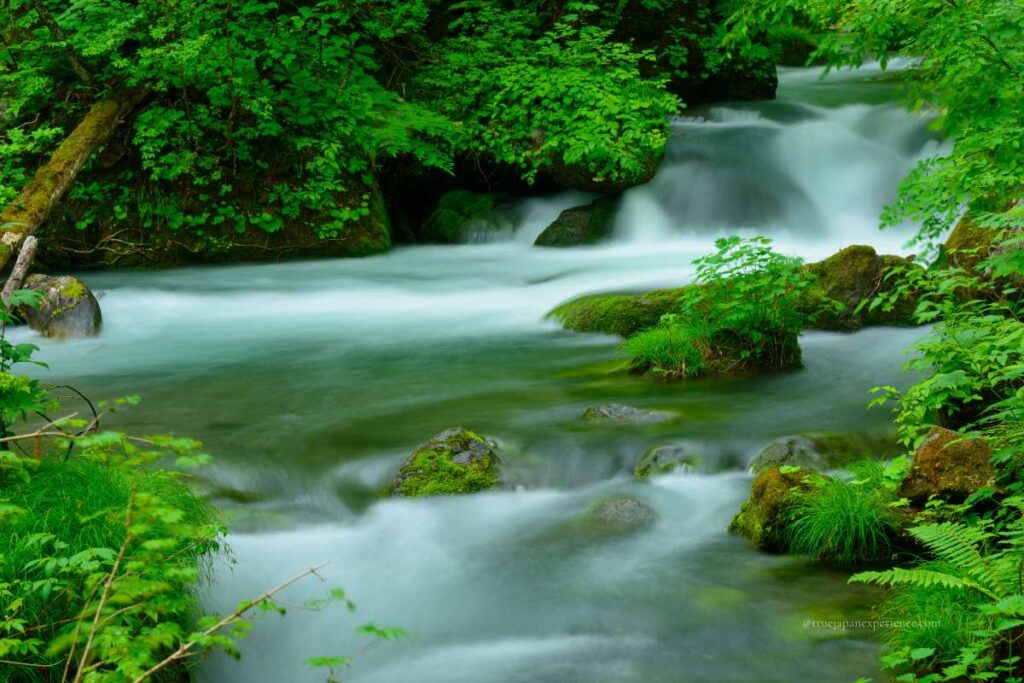
On Day 3, there’s really no need to rush.
After two days of excitement and walking, it’s okay to take it easy.
You might want to enjoy the morning air outside, or just take your time at the hotel and let your body rest a little before you head home.
It’s a gentle way to end the trip—calm, unhurried, and full of quiet moments to remember.
The Nebuta Festival and Oirase Gorge feel like total opposites.
One’s loud and full of fire. The other’s quiet, cool, and green. But maybe that’s why they work so well together.
You shout, you walk, you eat something sweet. Then you breathe. And somehow, those small moments stay with you.
No need to hurry. Let the rhythm of the trip carry you.
If you’re thinking about where to go next, I’ve written some other guides too.
→ Summer Festivals to Enjoy in Japan This July: Fireworks and Floats
Japan has so many moods.
And the next one’s always waiting.


